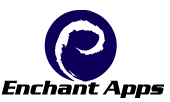In IT world, you hear a lot of terms, abbreviations and jargon that is easy to say but difficult to comprehend. Lot of these terms are used in mobile apps development world on a day to day basis.
Here is a list of some abbreviations and what they mean:
API (application programming interface): A set of routines, protocols, and tools that specify how certain software components interact with each other. For any application, including mobile apps development, API connects one application to another or one module to another within the same application.
CX (customer experience): A customer’s total experience with a business. UX – User Experience and CX are critical to any mobile app development process.
DMZ (demilitarized zone): An area of a corporate network where services are exposed to an external network, such as the Internet.
FIPS (Federal Information Processing Standards) Publication 140-2: Defines the security requirements for cryptographic modules specified by the U.S. National Institute of Standards and Technology (NIST).
HTML (HyperText Markup Language) and HTML5: The primary language used for creating web pages that can be displayed in a web browser. HTTP (HyperText Transfer Protocol ): The application protocol that is the foundation for data communication over the Internet. HTTPS is a secure communication protocol layered on top of SSL. SSL is Secured Sockey Layer.
JSON (JavaScript Object Notation): An open standard format that uses human-readable text to transmit data objects.
Kerberos: A ticket-based computer network authentication protocol.
MAM (Mobile Application Management): Software used to provision and control access to mobile apps across an organization.
MDM (Mobile Device Management): Software used to secure, monitor, manage, and support mobile devices, such as smartphones and tablets, across an organization. Many time we lose track of MDM when doing mobile app development. It is critical to have understanding of MDM platforms.
NTLM (NT LAN Manager): A suite of Microsoft security protocols that provides authentication, integrity, and confidentiality to users.
QoS (quality of service): Control mechanisms used to affect the overall performance of a network.
RAML (RESTful API Modeling Language): A nonproprietary, vendor-neutral, open specification that describes RESTful APIs in language that is both human and computer readable.
RWD (Responsive Web Design): A web design approach that optimizes websites for display on a variety of devices, particularly smartphones and tablets.
SLA (service-level agreement): A formally defined contract for performance of a service.
SMB/CIFS (Server Message Block/Common Internet File System): An application-layer network protocol used primarily for sharing files and printers over a network.
SOAP (Simple Object Access Protocol): A protocol specification for exchanging structured information in the implementation of web services in computer networks.
SQLite: A relational database management system.
SSL/TLS (Secure Sockets Layer/Transport Layer Security): Asymmetric cryptographic protocols designed to provide communication security over the Internet.
SSO (Single Sign-On): A form of access control that allows a user to log in to a single system in order to gain access to multiple independent systems.
VM (virtual machine): A software-based emulation of a physical computer.
VPN (virtual private network): A tunneling or encryption protocol that extends a private network across a public network, such as the Internet. web service: As defined by the World Wide Web Consortium (W3C), a software system designed to support interoperable machine-to-machine interaction over a network.
XML (EXtensible Markup Language): A markup language specification that is both human- and machine-readable.
